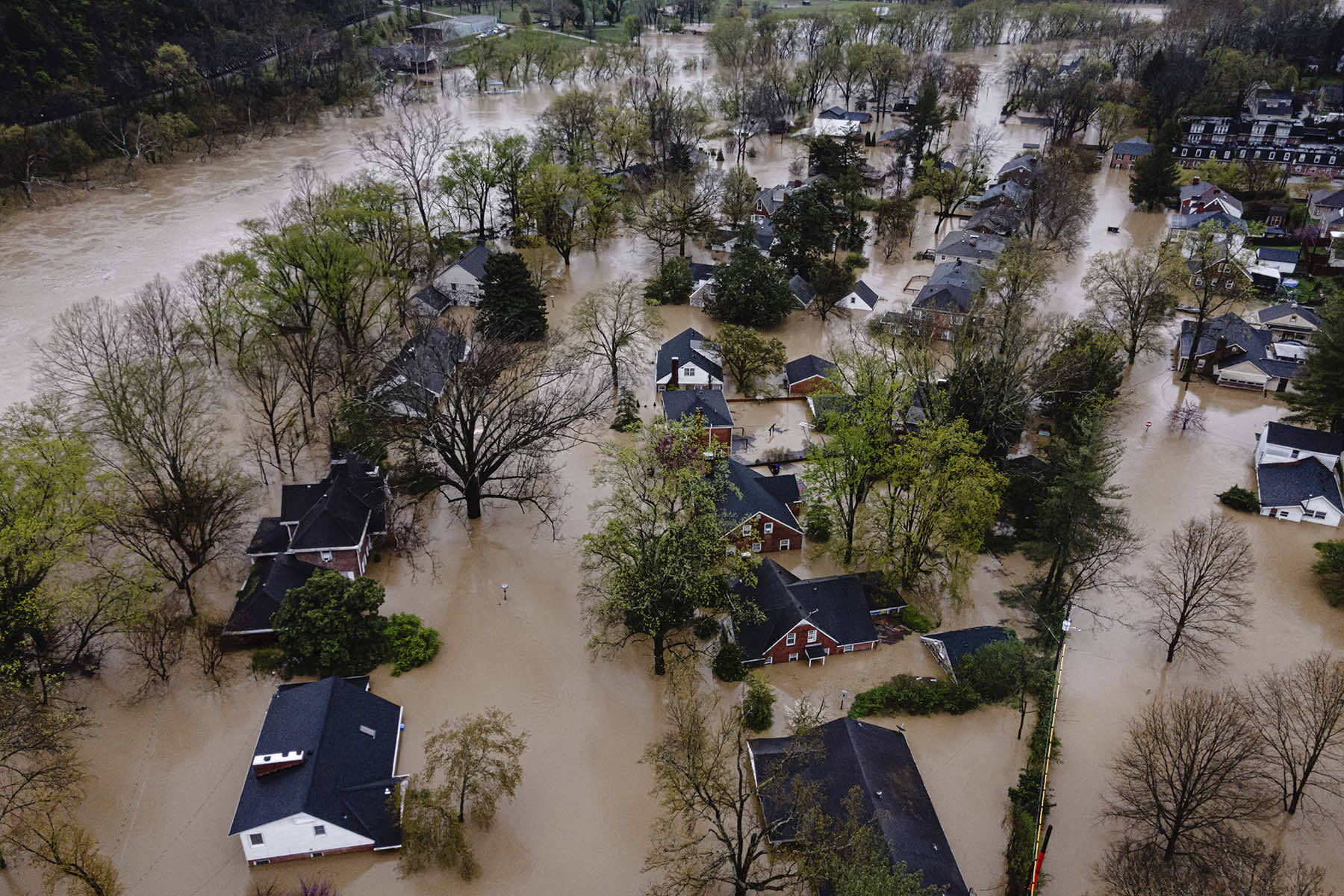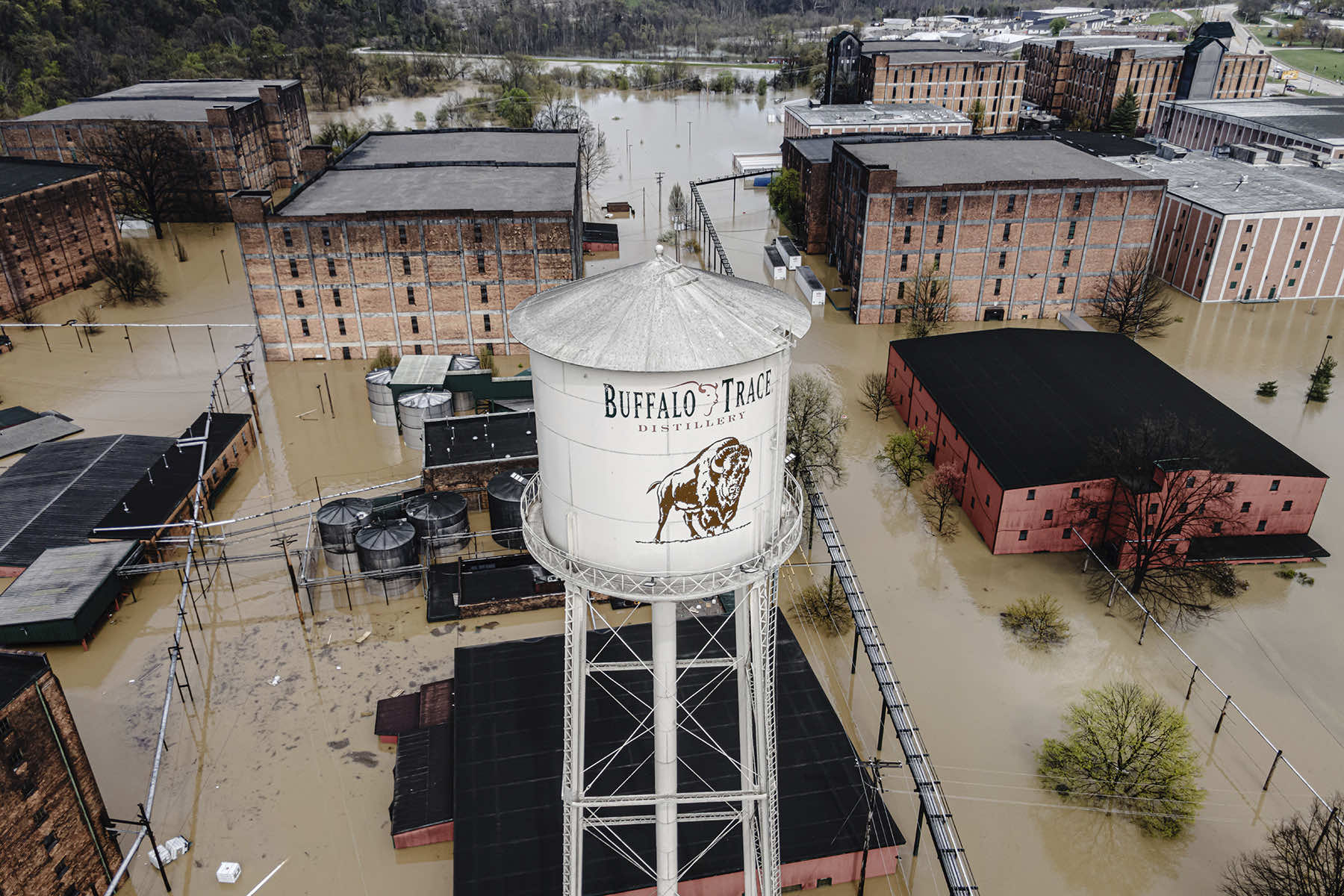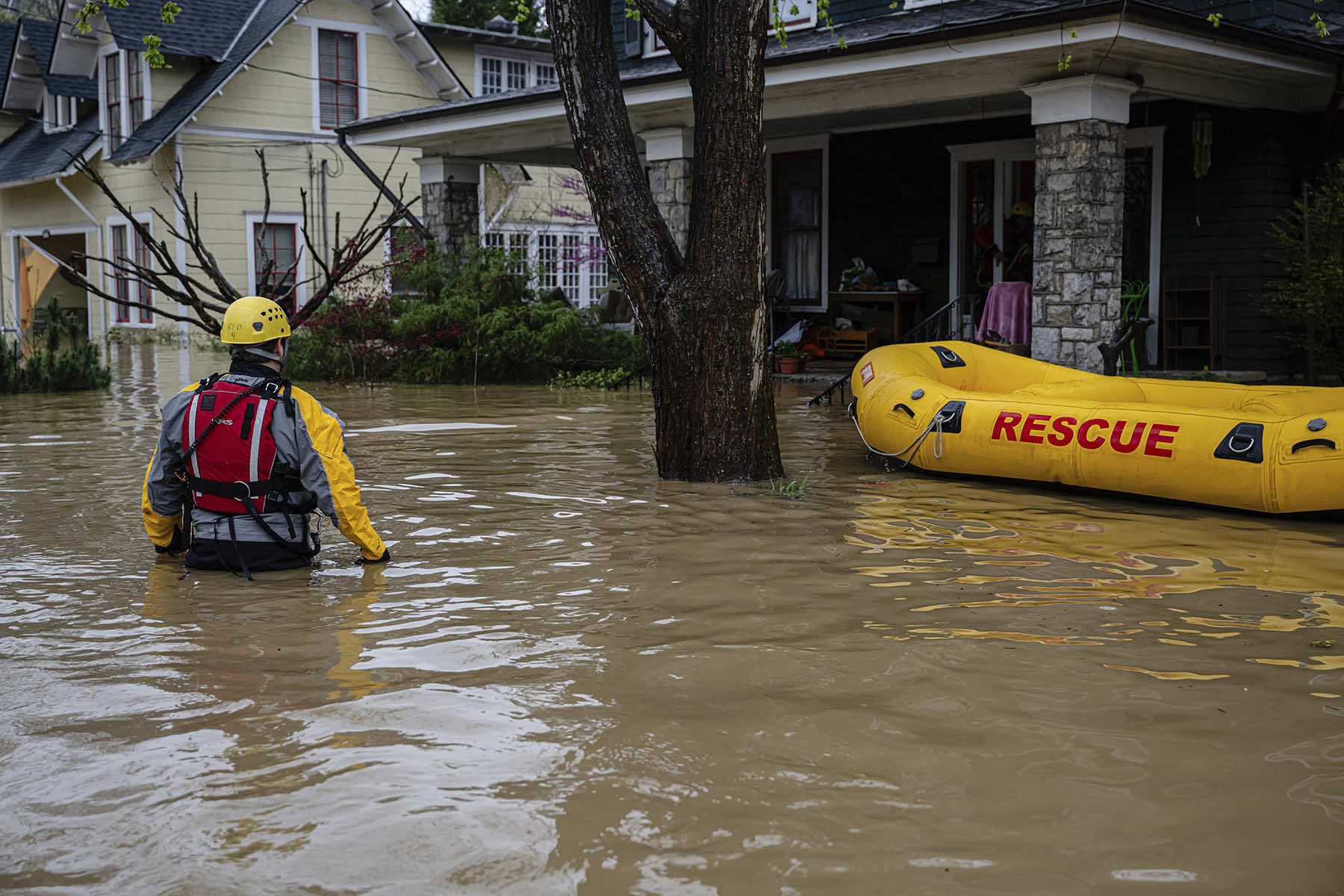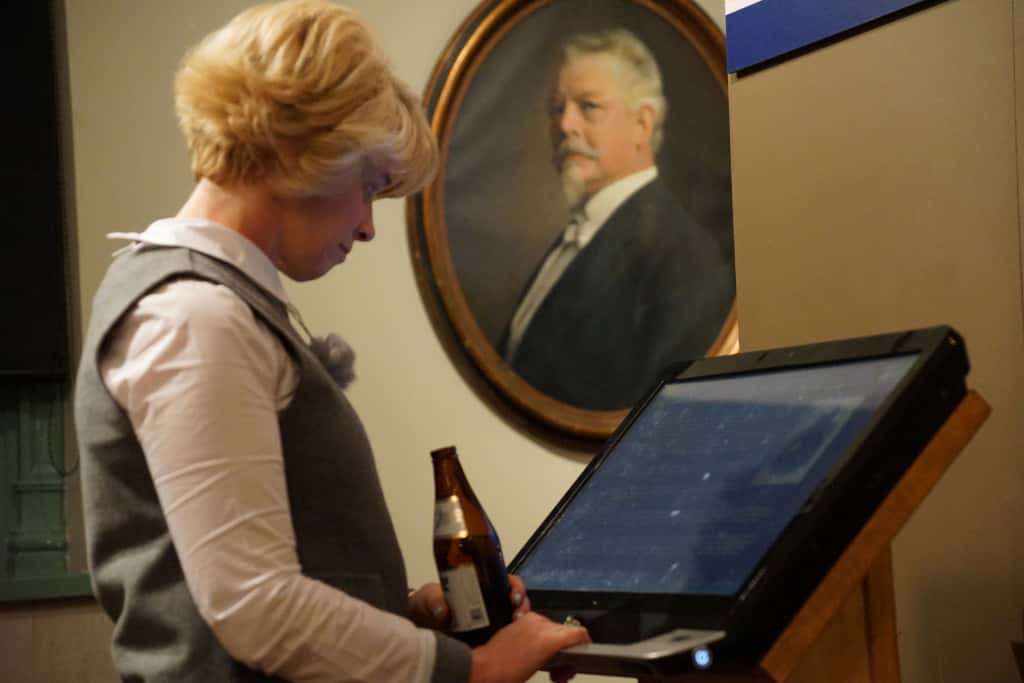
Days of unrelenting downpours swelled rivers to record levels across Kentucky in April, submerging neighborhoods and threatening a famed bourbon distillery in the state capital.
Inundated rivers posed the latest threat from persistent storms that have killed at least 23 people since last week as they doused the region with heavy rain and spawned destructive tornadoes. At least 157 tornadoes struck within seven days beginning March 30, according to a preliminary report from the National Weather Service. Though the storms have finally moved on, the flood danger remains high in several other states, including parts of Tennessee, Arkansas and Indiana.
Cities ordered evacuations, and rescue crews in inflatable boats checked on residents in Kentucky and Tennessee, while utilities shut off power and gas in a region stretching from Texas to Ohio. Floodwaters forced the closure of the historic Buffalo Trace Distillery, close to the banks of the swollen Kentucky River near downtown Frankfort.
Salon owner Jessica Tuggle watched recently as murky brown water approached her Frankfort business. She and her friends had moved her salon gear to a nearby taproom.
“Everybody was just, ‘Stop raining, stop raining,’ so we could get an idea of what the worst situation would be,” she said.
Officials diverted traffic, turned off utilities to businesses and instituted a curfew in Frankfort as the river crested just short of a record. More than 500 state roads across Kentucky were still closed, Governor Andy Beshear said.
Ashley Welsh, her husband, four children and pets had to leave their Frankfort home along the river, abandoning a lifetime of belongings.
When she checked her house’s cameras the next morning, the floodwaters had risen to the second floor.
“My stuff was floating around in the living room,” Welsh said. “I was just heartbroken. Our life is up there.”
STORMS LEAVING DEVASTATING IMPACT
Twenty-three deaths have been reported since the storms began on April 2, including 10 in Tennessee. Among the four confirmed killed in Kentucky, a 9-year-old boy was caught up in floodwaters while walking to catch his school bus.
A 5-year-old boy in Arkansas died after a tree fell on his family’s home, police said. And a man was found dead in a submerged vehicle, the Arkansas Division of Emergency Management said.
A 16-year-old volunteer Missouri firefighter died in a crash while seeking to rescue people caught in the storm. While in Carroll County, Tennessee, an electric department lineman died while working in the storms, state emergency management officials said.
Two men sitting in a golf cart, a father and son, were killed when a tree fell on them at a golf course in Columbus, Georgia, Muscogee County Coroner Buddy Bryan said.
The Kentucky River crested at Frankfort Lock at 48.27 feet, just shy of the record of 48.5 feet set there on December 10, 1978, said CJ Padgett, a meteorologist with the National Weather Service’s Louisville, Kentucky, office.
Beshear said more than 1,000 people had no access to water and nearly 3,000 were under boil water advisories. The city of Harrodsburg about 30 miles south of Frankfort said on social media that its water system had to discontinue pumping around midnight because of flood levels on the Kentucky River. By April 7, the city’s treatment plant was back to normal operations.
John and Phyllis Sower hunkered down about a half-block from the river in their Frankfort home, which had about 4 feet (122 centimeters) of water in the cellar. A neighbor waded over to bring them flowers on their front porch.
“We are an island in the Kentucky River,” Phyllis Sower said.
In northeastern Arkansas, Gov. Sarah Huckabee Sanders called the scene “absolutely heartbreaking” around the town of Hardy, which took damage to its city hall and other buildings.
West Memphis, Arkansas, Fire Chief Barry Ealy told WREG-TV that crews in the flood-prone city have rescued more than 100 people.
In Dyersburg, Tennessee, Michael Glass had to evacuate to a hotel with his wife, three children and dog after water reached his front door and his entire neighborhood became flooded.
“It’s been a really stressful time,” he said. “When I woke up this morning, the waters came up dramatically. I had to make a choice whether to stay or get out of here.”
A tornado destroyed more than 100 structures in McNairy County, Tennessee, tearing through the town of Selmer with winds estimated up to 160 mph, local emergency management officials said. State officials say severe weather killed five people in the county of roughly 26,100 residents.
TRUMP’S ABANDONMENT OF RED-STATE DISASTER VICTIMS
But for many Americans caught in the devastation, the storm is only the beginning. Behind the walls of rising water and collapsed homes is a slower, crueler force: abandonment. Federal support systems once designed to respond quickly and comprehensively — FEMA, NOAA, the National Weather Service — have been hollowed out by budget cuts and weeks of political attacks the Trump regime.
In his second term, Trump has repeatedly slashed disaster preparedness funding while ramping up spending on militarized border infrastructure and surveillance programs. Dozens of key positions remain vacant at FEMA and the National Oceanic and Atmospheric Administration, even as natural disasters grow deadlier and more frequent. Weather forecasting offices across the country operate with skeleton crews. Local officials have been often left to beg for help.
And while entire counties are submerged, while children die waiting for rescue, Trump plays golf — at taxpayer expense, often while tweeting insults at governors requesting federal assistance. Trump offers no pretense of concern.
His supporters in rural Kentucky, Arkansas, and Tennessee — who voted for him twice — wait in shelters or rooftops, hoping for help that may not arrive. In the towns that carried him to victory, misery is met with silence.
“It’s like we’ve been written off,” said one emergency coordinator in Arkansas, who asked not to be named to avoid federal retaliation. “We’re on our own.”
The irony is as brutal as the floodwaters: the very Americans who trusted Trump to protect them now face disaster with no safety net, no leadership, and no plan. And the long-term damage is far deeper than ruined homes. Emergency response systems do not rebuild overnight.
WHY SO MUCH NASTY WEATHER?
Though significant rains have ended in the Southern Plains and the Mississippi, Tennessee, and Ohio valleys, flooding on most rivers will persist this week, with some smaller waterways receding in the next few days, according to the weather service.
Forecasters attributed the violent weather to warm temperatures, an unstable atmosphere, strong winds, and abundant moisture streaming from the Gulf.
The NWS said 5 inches of rain fell in Jonesboro, Arkansas — making it the wettest day recorded in April in the city. Memphis, Tennessee, got 14 inches of rain in under a week, the NWS said.
Marshall County in western Kentucky received nearly 16 inches over the last five days, said Padgett, the meteorologist. Parts of central Kentucky received 10 to 12 inches over those days and eastern Kentucky received 6 to 8 inches, Padgett said.
The storms come after the Trump regime cut jobs at NWS forecast offices, leaving half of them with vacancy rates of about 20%, or double the level of a decade ago.























